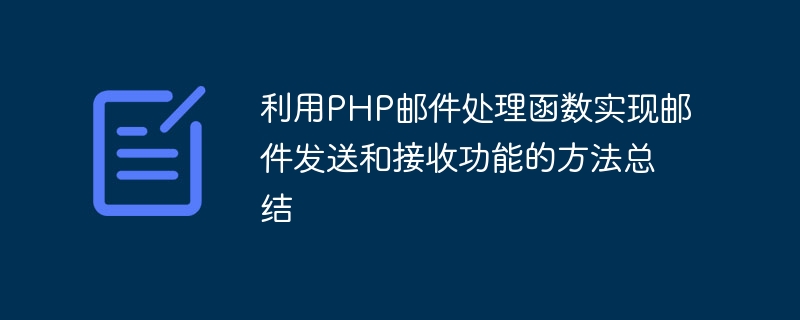

Summary of methods of using PHP email processing functions to implement email sending and receiving functions
In today's Internet era, email has become an indispensable part of people's daily life and work. missing part. In website development, sometimes we also need to use PHP to implement the sending and receiving functions of emails. PHP provides many mail processing functions. The following will summarize the methods of using PHP mail processing functions to implement mail sending and receiving functions.
1. How to send emails using PHP mail processing functions:
2. How to use PHP mail processing function to receive mail:
To sum up, using PHP mail processing functions to implement mail sending and receiving functions requires a series of configurations and operations, including setting relevant parameters, connecting to SMTP or mail servers, setting mail content and receiving mails. List etc. By properly configuring and calling the corresponding functions, we can easily implement the sending and receiving functions of emails.
However, when using PHP mail processing functions, we also need to pay attention to some security and stability issues, such as avoiding being abused as a spam sending tool, dealing with busy mail servers, etc. At the same time, we can also adjust the frequency of sending emails and set the encoding of emails according to actual needs.
In short, using PHP email processing functions to implement email sending and receiving functions can help us better manage and process emails, improve work efficiency and user experience. Whether in personal website development or enterprise application development, mastering these methods is very useful.
The above is the detailed content of Summary of methods for implementing email sending and receiving functions using PHP email processing functions. For more information, please follow other related articles on the PHP Chinese website!




